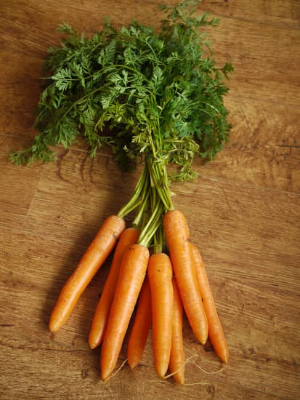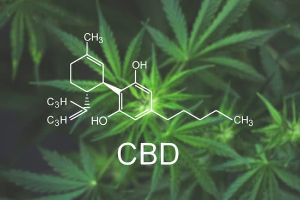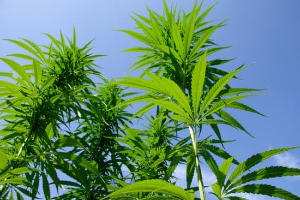CBD. CBG. CBN. THC. What do all those three letter acronyms have in common? They’re cannabinoids. “Cannabinoids” is a big word for “compounds in certain plants that can have specific effects in the human body when they are consumed.”
What are those effects? And how do they happen? Before we explain it. We’re going to take a detour to another plant you might be more familiar with: the carrot.
Let’s talk carrots?
 You’ve probably eaten a carrot or two in your day. They’re delicious, and they are also nutritious. Some of the chemical compounds in carrots that are good for you include:
You’ve probably eaten a carrot or two in your day. They’re delicious, and they are also nutritious. Some of the chemical compounds in carrots that are good for you include:
-
Beta-carotene (converts in your body to Vitamin A, which you need to live)
-
Lutein (promotes healthy vision)
-
Potassium (helps regulate your blood pressure)
-
Vitamin B6 (helps convert food into energy)
There are lots more nutrients in carrots, like magnesium, iron, riboflavin, niacin, and the list goes on. Each one of those nutrients has a different effect on your body when you eat a carrot.
How are hemp and cannabis plants like carrots?
Like carrots (and kale, and coffee beans, and all the other plants we consume), hemp and cannabis plants have compounds that can produce effects in your body when you ingest them. Some of those compounds are called cannabinoids.
You’ve probably heard of the cannabinoid that gets the most attention: THC. That’s the compound in marijuana plants that gets you high. But there are actually more than 100 cannabinoids, and they have different effects.
Common cannabinoids, and what they can do
CBD
CBD is short for cannabidiol. CBD doesn’t get you high like THC does, but some people find it produces calming effects. Others that find that it helps to alleviate their chronic pain. More studies are needed to determine the best dosage and delivery method to get the best impact from CBD. But right now the ways people take it include tablets, tinctures, topicals, and gummies.
CBG
CBG is another cannabinoid, cannabigerol. It’s the first cannabinoid that young hemp and cannabis plants make. Like CBD, it doesn’t have intoxicating effects. But what it can do is increase the effectiveness of other cannabinoids through what’s called the “entourage effect.” That’s why you might see products with CBG added to them.
CBN
CBN, or cannabinol, is found in older plants. One reason some people take it is because it makes them feel sleepy. CBN may also have anti-inflammatory effects for some users.
THC
We’ve all heard of this one, right? THC is the compound in cannabis that creates the feeling of being high. You won’t get the same effect from the rest of the cannabinoids. If the high is what you’re after, you need to consume some THC.
How much should you take?
Every body is different. If two people could eat the exact same carrot, their bodies extract and use the beta carotene in that carrot just a little bit differently. It’s the same with cannabinoids. We know generally how these compounds can affect the human body, but we can’t tell you exactly how they’ll work in your human body. The best way for you to find out is to try a small dose and see how you feel.

Can you take too much?
It’s possible to take too much of everything, including food and water. For most people, it’s hard to overdose on cannabinoids. Moderation is always the safest policy. Start slow, and if you think you may need a higher dose, increase your intake gradually. Our chewable tablets are scored so you can start with half an edible if that feels most comfortable to you.
